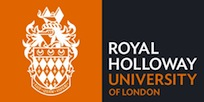Conveners
Parallel 1E: Rare/Precision Lepton Physics
- Session chair: Dr. Simon Peeters
Dr
Stefano Torre
(UCL)
08/04/2014, 13:00
The Neutrino Sector
contributed talk
The NEMO-3 detector, installed in the Modane underground laboratory, ran between February 2003 and January 2011. The NEMO-3 experiment employed a tracker and calorimeter detector technology to fully reconstruct the topology of the events generated in thin foils of active material. Thanks to its unique design, NEMO-3 studied the details of the Double-β decay in seven isotopes ($\rm{^{100}Mo}$,...
Mr
Guillaume Eurin
(University College London (UK))
08/04/2014, 13:15
The Neutrino Sector
contributed talk
The main goal of the SuperNEMO collaboration is to search for neutrinoless double-$\beta$ decay.
This would prove that the neutrino is a Majorana particle ($\nu$ = $\overline{\nu}$).
Today the best lower limits on half-lives of this process are set around 10$^{24}$ - 10$^{26}$ years as obtained by the NEMO-3 experiment (for the 2$\beta$ isotope $^{100}$Mo) and other experiments.
Several...
Pawel Guzowski
(University of Manchester)
08/04/2014, 13:30
The Neutrino Sector
contributed talk
The SuperNEMO experiment aims to search for neutrinoless double beta decay. If observed, this would show that the neutrino is its own antiparticle and be the first evidence for total lepton number violation. With 100 kg of source, a half-life sensitivity of order $10^{26}$ years (effective neutrino mass sensitivity down to 50 meV) can be achieved. The experimental techniques are similar to the...
Dr
Philip Jones
(QMUL)
08/04/2014, 13:45
The Neutrino Sector
contributed talk
A summary of the current status of the SNO+ experiment.
The SNO+ experiment located in the SNOLAB facility in Sudbury, Ontario, Canada will primarily search for neutrinoless double beta decay by deploying Te130 into a kTonne of liquid scintillator. The experiment will additionally study solar, geo, supernova (if one occurs) and reactor neutrinos as well as nucleon decay in a separate water phase.
Ashley Back
(Queen Mary, University of London)
08/04/2014, 14:00
The Neutrino Sector
contributed talk
The multi-purpose SNO+ detector, part of SNOLAB, is currently being filled with ultra-pure water, marking the first step before the addition of liquid scintillator and then Tellurium. While the level of water in the detector rises, the level of activity in preparation for commissioning is accordingly steadily increasing. Recent periods of continuous operation—each lasting of order two...
Mark Lancaster
(University College London (UK))
08/04/2014, 14:15
Flavour Physics and Beyond
contributed talk
The 2004 measurement of the muon’s anomalous magnetic moment by the E821 experiment at Brookhaven is the second most cited paper in experimental particle physics behind the observation of neutrino oscillations. This measured value differs by 3.6σ from the Standard Model (SM) prediction. This may be indicative of new physics beyond the SM or a statistical fluctuation. In this talk I will...
Dr
Sam Henry
(University of Oxford)
08/04/2014, 14:30
Flavour Physics and Beyond
contributed talk
A key requirement of the g−2 experiment, aiming to measure the muon anomalous magnetic dipole moment to 0.14ppm, is to monitor the magnitude of the magnetic field around the storage ring to 0.07ppm. This will be done with several hundred proton NMR magnetometers. These must all be calibrated against a standard magnetometer, to account for the ~0.1ppm shifts of individual probes due to the...
Andrew Edmonds
(UCL)
08/04/2014, 14:45
Flavour Physics and Beyond
contributed talk
I will describe the COMET experiment, which will search for muon to electron conversion in aluminium, and I will also present some of the work I have done for it.
Ms
Amy Cottle
(University of Oxford)
08/04/2014, 15:00
Flavour Physics and Beyond
contributed talk
Neutron electric dipole moment (nEDM) experiments require precision magnetometry to correct for systematic effects due to magnetic field fluctuations. I discuss the options for such magnetometers and present details of a 12-SQUID magnetometry system constructed for use in a cryogenic nEDM experiment. This has been developed to operate in 0.5 K superfluid helium and installed and tested in...
Oliver Burrow
(University of Liverpool)
08/04/2014, 15:15
Particle Astrophysics, Current and Future
contributed talk
Atom interferometers are precision instruments, currently capable of measuring forces an unprecedented precision, with this precision becoming more precise with the development of new techniques. Using atomic interferometers, a parameter search can be made to investigate the dark contents of the vacuum and shed some light on fundamental physics questions such as "What is the nature of dark...
